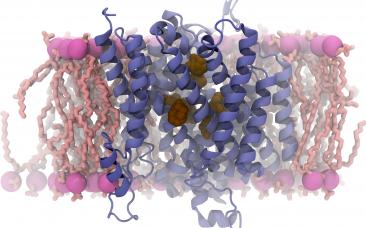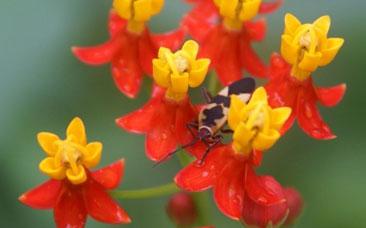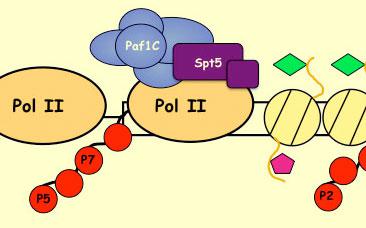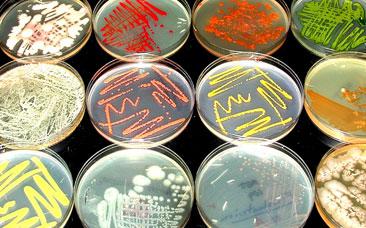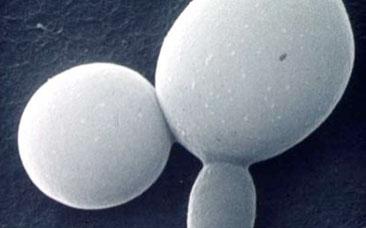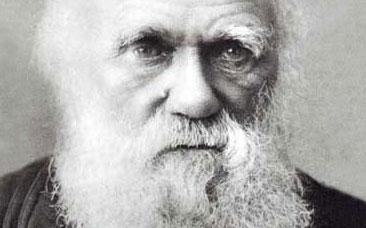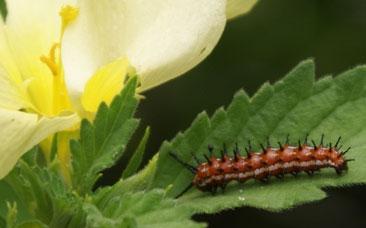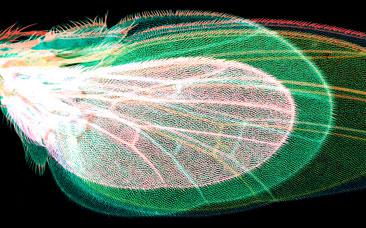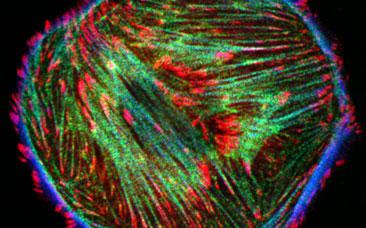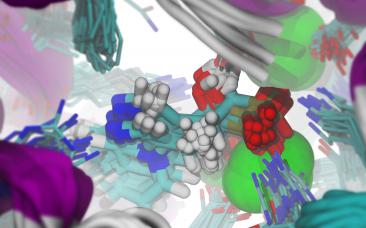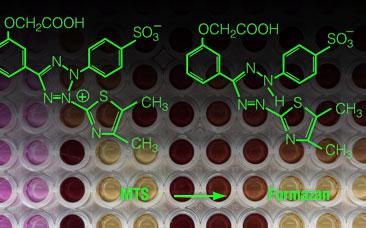Date
Apr 25 2016 - 4:00pm
Location
169 Crawford Hall
University of Pittsburgh Department of Biological Sciences Presents:
Dr. Anita Koshy
Univesity of Arizona
"Interrogating the CNS-Toxoplasma gondii interaction in vivo"
Monday, April 25, 2016
169 Crawford Hall
4:15 P.M.
4:00 P.M. refreshments
Host: Jon Boyle
News or Events
Types of Events
Date
Apr 22 2016 - 12:00pm
Location
A219 B Langley Hall
Graduate student Mike Preston to present his research on Friday, April 22, 2016 at noon in A219B Langley Hall.
Mike Preston from the Brodsky Lab
"TBA”
News or Events
Types of Events
Date
Apr 20 2016 - 8:30am
Location
A202 Langley Hall
Department of Biological Sciences
PhD Dissertation Defense
Eric A. Griffin
“The Greater Unseen: On the Identities, Distributions, and Impacts of Foliar Bacteria on Tropical Arboreal Species”
Wednesday, April 20, 2016
8:30am
Langley Hall A202
Major Advisor: Dr. Walter P. Carson
News or Events
Types of Events
Submitted by EPOLINKO on Wed, 2013-12-18 16:11
Pymatuning Description
PLE’s outreach program offers area schools the chance to get hands-on ecological experiences. Take a look at how we are doing it!
Pymlink
Submitted by EPOLINKO on Wed, 2013-12-18 16:10
Pymatuning Description
Each fall, PLE shifts gears from classes and research to become a top-notch conference center. Come see how PLE can be the perfect lakeside destination for your conference or retreat
Pymlink
Submitted by EPOLINKO on Wed, 2013-12-18 16:08
Pymatuning Description
PLE has a vibrant community of researchers that join us each year to take advantage of our excellent facilities as well as the diversity of natural habitats locally available.
Pymlink
Submitted by EPOLINKO on Wed, 2013-12-18 16:06
Pymatuning Description
PLE offers a diverse line-up of undergraduate field courses each summer. Come to the shores of Pymatuning to learn biology where it happens: In the field!
Pymlink
Submitted by EPOLINKO on Fri, 2013-12-13 09:25
Pymatuning Description
Check us out on Facebook!
Pymlink
Submitted by EPOLINKO on Fri, 2013-12-13 09:20
Pymatuning Description
PLE’s outreach program offers area schools the chance to get hands-on ecological experiences. Take a look at how we are doing it!
Pymlink
Submitted by admin on Mon, 2013-12-09 10:31
Pymatuning Description
Each fall, PLE shifts gears from classes and research to become a top-notch conference center. Come see how PLE can be the perfect lakeside destination for your conference or retreat
Pymlink
Submitted by admin on Mon, 2013-12-09 10:30
Pymatuning Description
PLE has a vibrant community of researchers that join us each year to take advantage of our excellent facilities as well as the diversity of natural habitats locally available.
Pymlink
Submitted by admin on Mon, 2013-12-09 10:28
Pymatuning Description
PLE offers a diverse line-up of undergraduate field courses each summer. Come to the shores of Pymatuning to learn biology where it happens: In the field!
Pymlink
Research Short Description
The Structural Biology faculty visualize how protein and nucleic acid complexes assemble and catalyze biological processes
<p>The incredible diversity of life on this planet is made possible by proteins, all of which may be represented as linear heteropolymers of the same 20 amino acids, acting in specific catalytic and/or structural roles. The number of possible linear combinations of these amino acids in the average-sized protein chain exceeds the extimated number of atoms in the universe, and is thus fully compatible with the diversity of life. In the extreme, examples abound of single amino acid changes in a single protein in an organism which carry fatal consequences. Members of the Structural Biology Group in the Department of Biological Sciences, each working in their own system, seek to understand the details of both normal and mutant protein interactions, through a combination of techniques including X-ray crystallography, kinetic analysis, site-directed mutagenesis, and chemical sequence analysis.</p>
Research Image
Sections
Research Short Description
Plant Biology faculty study plant growth, microbial defense systems, and the interactions between plants and their environments
<p>The Plant Biology group of the Biological Sciences Department includes individuals working with all aspects of plant life, including symbioses with microorganisms, mating systems, effects of herbivory, and community intereactions.</p>
Research Image
Sections
Research Short Description
Understanding events involving DNA, RNA, and protein “factories” represent the focus of the Molecular Biology faculty
<p>Researchers in Molecular Biology in the Department of Biological Sciences use a broad array of molecular techniques to address genes and what they do: what is their structure, how are they expressed and how is that expression regulated, how do the products of that expression achieve their biological functions? This group has special expertise in such areas as transcription and its regulation, RNA splicing, mechanisms of recombination, virology, and protein-protein and protein-DNA interactions.</p>
Research Image
Sections
Research Short Description
Our Microbiology faculty study how pathogenic microbes and viruses infect and replicate in their hosts
<p>The microbes constitute the vast majority of organisms in the biosphere and are the foundation on which all life depends. Microbiological research currently underway in the Department of Biological Sciences includes studies of the organization and evolution of bacterial genomes and studies into the life cycles and evolutionary history of bacteriophages.</p>
Research Image
Sections
Research Short Description
The Genetics faculty use model systems to define how gene function orchestrates cellular events and animal physiology
<p>Research in Genetics in the Department of Biological Sciences is fundamental to the advancement of biological knowledge at all levels of organization, from molecules to populations. The Department of Biological Sciences has a number of research programs that have a strong genetic focus, using a variety of systems - both prokaryotic and eukaryotic - that offer unique challenges. For example, characterization of yeast mutants tease apart the fundamentals of eukaryotic transcription, and surveys of conditional mutants in <em>Mycobacteria</em> identify essential genes in this deadly pathogen.</p>
Research Image
Sections
Research Short Description
Evolution at all levels of organization are studied by the faculty in evolutionary biology
<p><em>Nothing in biology makes sense except in the light of evolution</em><br>--Theodosius Dobzhansky</p> <p>Evolutionary biology is an exciting field with important implications for all other areas of the biological sciences. Research by faculty in the Evolution Group in the University of Pittsburgh Department of Biological Sciences spans a diversity of topics and organisms, ranging from the molecular evolution of bacterial genomes to the physiological ecology of mammals. A major area of faculty research is in microevolutionary processes and mechanisms, including the evolution of plant mating systems, the roles of selection and genetic constraint in the evolution of separate sexes in plants, and the role of gene interactions in the evolutionary process. The study of macroevolutionary patterns is also a major focus of the group, with emphasis placed on the phylogeny and systematics of birds, reptiles, amphibians, and fossil mammals.</p>
Research Image
Sections
Research Short Description
Faculty in Ecology investigate how microbes, plants, and animals respond to their environments
<p>The Ecology group of the Biological Sciences Department uses a wide variety of approaches to resolve fundamental issues concerning ecological systems that range from microbes to aquatic and terrestrial communities. Model systems are used to explore diverse questions such as, how plants respond to changing environments, how pollinator-plant interactions shape the evolution of plant mating systems, how resources and trophic interactions structure tropical, temperate and aquatic communities, and how habitat fragmentation impacts ecological interactions and the genetic structure of populations.</p>
Research Image
Sections
Research Short Description
The Developmental Biology faculty use model organisms to understand how genes coordinate events during animal development
<p>The development of a multicellular organism from a single fertilized egg cell is a brilliant triumph of evolution. The Developmental Biology Group in the Department of Biological Sciences are investigating a variety of questions about development: how cells arising from division of the fertilized egg become different from each other; how they become organized into structures such as limbs and brains (see Figure below); how the organizing principles of development are embedded within the egg and in its genetic material. Members of this group use model organisms including fruit flies and mice. The sophisticated genetics available in these organisms provides a means to finding the molecules that control development and to understanding how they function.</p> <p>The central nervous system of this fruit fly embryo is stained with a dye to show its brain (left) and ventral nerve cord (bottom).</p>
Research Image
Sections
Research Short Description
Our Cell Biology faculty study the processes and diseases associated with intracellular organelles and cellular processes
<p>The Cell Biology faculty in the Department of Biological Sciences are probing the dynamic nature of cellular components including the directional movement of protein motors and chromosomes (see Figure), the transport and assembly of intracellular proteins and protein complexes, the formation of the cytoskeleton, and the biogenesis of organelles. Because each study is best approached using different tools, members of this group use model organisms including yeast, flagellate protistans, mice, and mammalian cell lines. <a href="http://www.pitt.edu/%7Ebiohome/Dept/Frame/microscopyfacility.htm">EM Facility</a> and <a href="http://www.pitt.edu/%7Ebiohome/Dept/Frame/viruslab.htm">Virus Laboratory</a>, as well as fluorescence microscopes, and biochemical and genetic methods are all employed to varying extents by the members of this group.</p>
Research Image
Sections
Research Short Description
Computational Biology faculty model the dynamics, structures, and evolution of macromolecules and biochemical reactions
<p>Computational biology is a blossoming field, whereby biologists harness the power of high-speed computation to model complex system or analyze large amounts of data. Many faculty members use computational approaches to solve problems, including those focused on the analysis of genome sequences, the modeling of ecological interactions, the dynamics of DNA:protein interactions, and the behavior of proteins at a molecular level.</p>
Research Image
Sections
Research Short Description
The Biochemistry faculty investigate the function of macromolecular protein and nucleic acid “machines”
Jöns Jacob Berzelius, in the preface (addressed to Gustav IV Adolf) to the first Swedish edition of Animal Chemistry, 1806, said: "Of all the sciences contributing to medicine, chemistry is the primary one, and, apart from the general light it throws on the entire art of healing, it will soon bestow on some of its branches a perfection such as one never could have anticipated." To this day, Biochemistry provides the interface between the living and non-living worlds.
The goals of the Biochemistry research faculty in the Department of Biological Sciences are to understand the molecular mechanisms underlying biological processes, and o examine the relationships between structure and function in biological macromolecules. Our interests include the mechanisms of action of both protein and RNA catalysts, and our studies require state-of-the-art methods ranging from X-ray crystallography, steady-state and single turnover kinetics, protein and nucleic acid purification and analysis, and mathematical modeling.
Research Image
Sections


